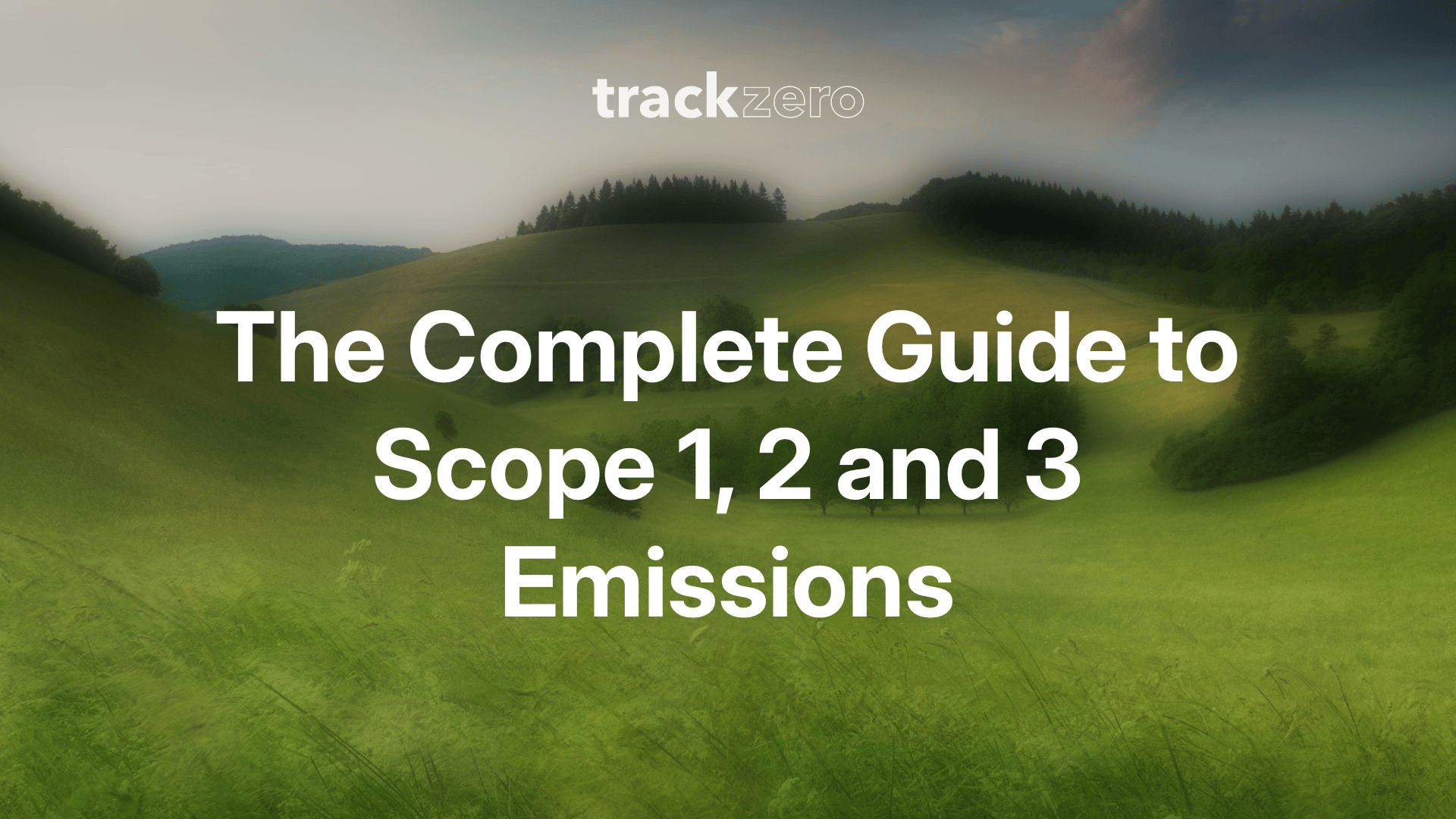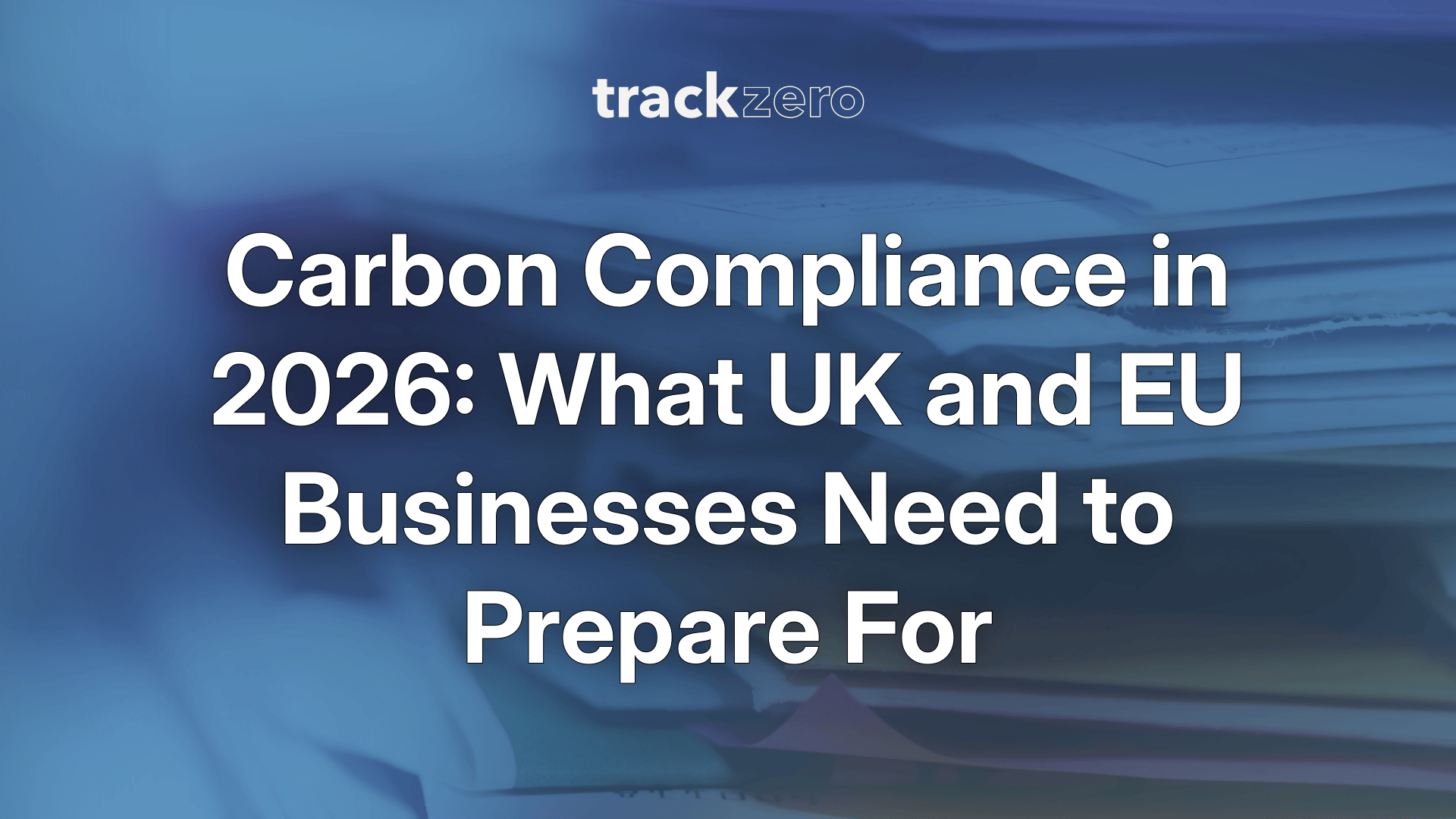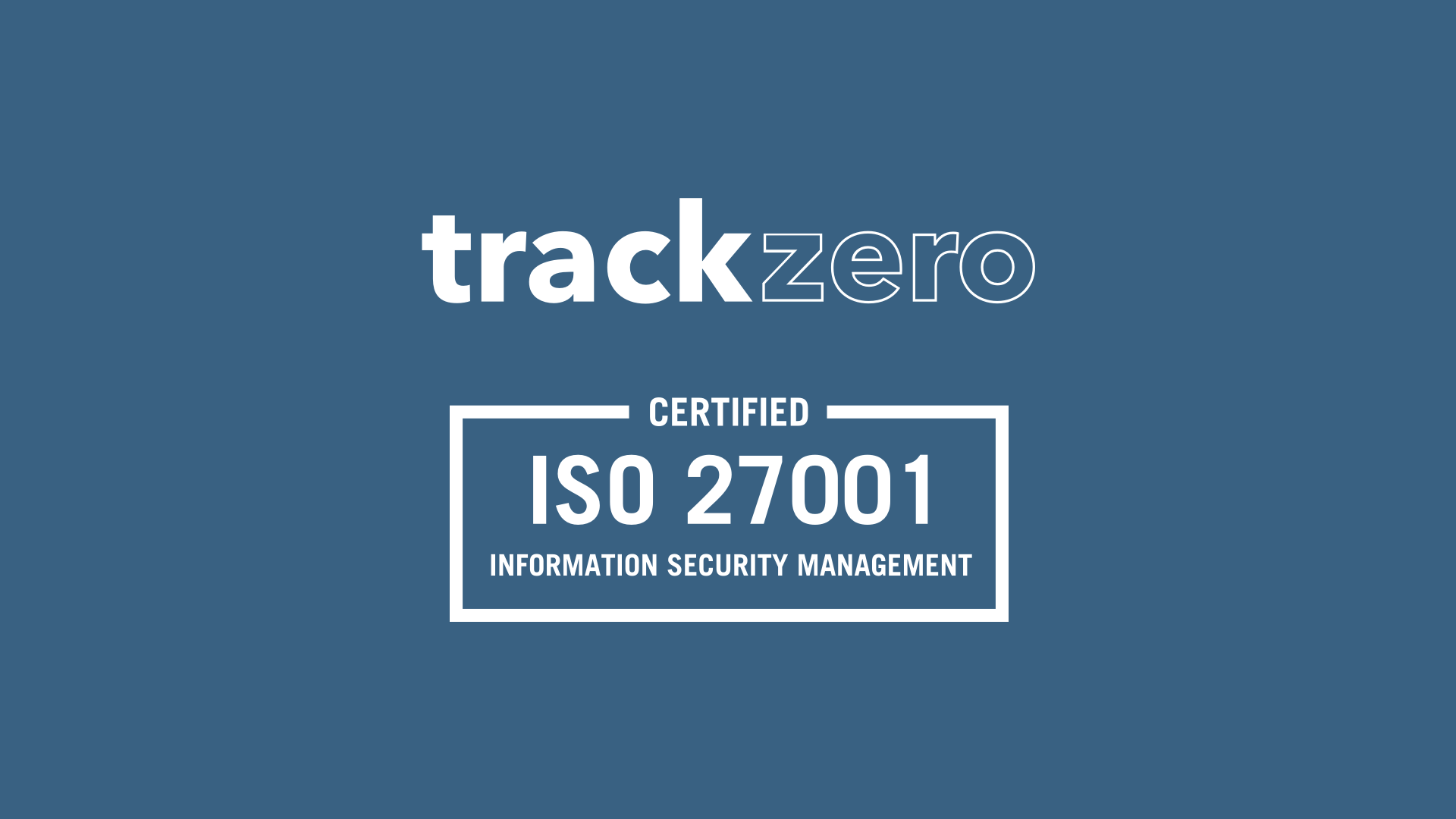Understanding your emissions is the first step to managing them. Whether you're leading sustainability in a large organisation, managing supplier relationships, or an SME navigating your climate responsibilities, knowing the difference between Scope 1, 2 and 3 emissions is essential for effective carbon management and compliance.
Background
The concept of Scope 1, 2 and 3 emissions was introduced in 2001 with the first edition of the Greenhouse Gas (GHG) Protocol, a global standard for measuring and managing emissions. It laid the foundation for consistent, credible carbon accounting across industries and countries.
Today, these three categories are at the heart of corporate climate disclosure and are visible across multiple standards, including the Science Based Targets Initiative, ISO14001, B Corp, EU Corporate Sustainability Reporting Directive, and more.
In this guide, we'll unpack what each scope means, why it matters, and how your organisation can take meaningful action.
Scope 1
Scope 1 emissions are often referred to as "direct emissions". They come directly from sources that the company owns or controls. These are the most straightforward to identify and often the easiest to reduce through operational changes. Some examples include:
- Fuel combustion in company-owned vehicles (e.g. vans, lorries)
- On-site natural gas boilers or generators
- Fugitive emissions from refrigerants or industrial gases
- Fuel used to power machinery from industrial processes
Scope 1 emissions for most office-based businesses are very low. However, for companies in sectors like manufacturing, logistics, or construction, they can form a significant portion of the footprint.
Reducing Scope 1 emissions can improve energy efficiency, lower operating costs, and show quick wins on your sustainability journey!
💡 Quick Tip:
If you're a brand that designs products but manufactures them through third parties, most of your production emissions will be Scope 3. Engaging suppliers and using tools like TrackZero helps make these invisible emissions visible and actionable.
Scope 2
Scope 2 emissions are the indirect greenhouse gas emissions that come from the generation of purchased energy, typically electricity, heating, or cooling that your organisation uses but doesn't generate itself.
Examples include:
- Electricity used to power office buildings, factories, or warehouses
- Purchased steam, heat, or cooling from an external provider
Although these emissions happen off-site, your organisation is still responsible for them because you're consuming the energy. Scope 2 is especially relevant for companies with energy-intensive operations or large office footprints.
Reducing Scope 2 emissions often starts with:
- Switching to renewable electricity suppliers
- Improving energy efficiency across sites
- Installing on-site renewable generation, such as solar panels
⚡ Did you know?
Reporting Scope 2 emissions can follow either a location-based method (using grid averages) or a market-based method (reflecting specific energy purchases). Most climate disclosure frameworks recommend reporting both. We will go into this in more detail in a future blog!
Scope 3
Scope 3 emissions are all the indirect emissions not included in Scope 2... basically, everything that happens up and down your value chain. These are emissions your organisation doesn't directly control, but that are linked to your operations.
They're usually the largest share of a company's carbon footprint and the hardest to measure, because they involve third parties like suppliers, customers, and logistics providers. Even though you may not directly control Scope 3 emissions, you influence them and your ability to act on them demonstrates climate leadership. Many regulatory frameworks, like the EU Corporate Sustainability Reporting Directive, and initiatives like the Science Based Targets Initiative, now require Scope 3 disclosure for meaningful reporting.
Examples include:
- Emissions from suppliers who manufacture your products or components
- Business travel (e.g. flights, trains, hotel stays)
- Employee commuting
- Transportation and distribution of goods
- Use of sold products (e.g. fuel consumed by vehicles you sell)
- End-of-life treatment of products (e.g. disposal or recycling)
- Investments, franchises, and leased assets
The requirements for Scope 3 tracking are becoming more prevalent. Stay ahead of the curve and start to:
- Map your value chain to understand where emissions occur
- Engage suppliers with clear expectations and support
- Use tools like TrackZero to collect and standardise supply chain data
- Focus on circularity, longevity, and low-carbon design in products
- Collaborate across sectors and industry initiatives
💡 Pro tip:
Scope 3 may seem overwhelming, but it's also where your organisation can lead systemic change, especially by helping SMEs measure and reduce their own emissions. Platforms like TrackZero make it easier to engage suppliers, collect reliable data, and turn complex value chains into climate action.
🔍 At a Glance: Scope 1, 2 and 3 Emissions
Understanding the difference between Scope 1, 2 and 3 emissions is more than just a reporting requirement. It's the foundation for real climate action. Whether you're a large organisation with ambitious net-zero goals or an SME just starting out, visibility is key. The better you understand your emissions, the better decisions you can make to reduce them.
🚀 TrackZero empowers businesses of all sizes to simplify carbon reporting, engage suppliers, and take action across all three scopes. From data collection to actionable insights, our platform turns complex compliance into meaningful progress.
Ready to make your emissions visible and your impact count? Let's get started!




